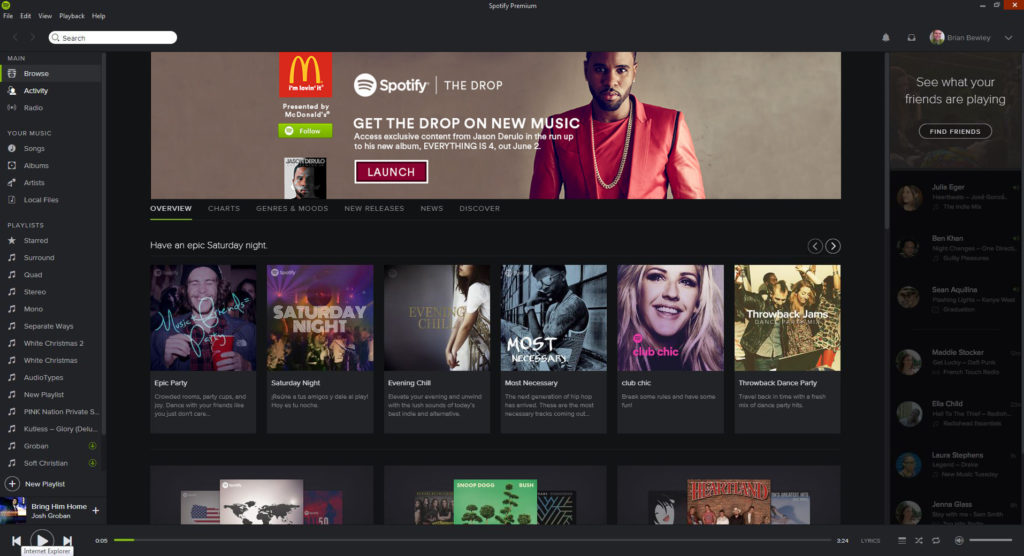Music streaming services such as Apple Music, Spotify and Pandora continue to draw in millions of listeners on a daily basis. With that, brands are getting more involved with them, with marketers finding new ways to become integrated with the networks and make brands more noticeable.
Spotify has launched the latest initiative by announcing that marketers could sponsor the company’s owned-and-operated playlists for millions of followers. With this move, brands now have more options available, aside from curating a Spotify playlist. Now, through marketing, brands can reach out to specific types of audiences, according to Spotify’s VP-global head of sales, Brian Benedik.
These playlists, which range from Monday Morning Commute to Teen Party, have a massive outreach, according to Benedik. More than one billion streams are activated per week, and the top playlist has 8.3 million followers.
But brands have been building up this leverage for some time, partnering with music streaming services for mutual benefits. For instance, Pandora teamed up with Mazda to integrate its application into its latest car models, including the 2016 Mazda CX-3 and CX-9.
Marketers have also become more involved in creating ideal playlists that match up with their brands’ style. Bravo, for example, partnered with Spotify back in 2013 to produce DJ playlists based on shows like The Real Housewives of Atlanta and Thicker Than Water; T-Mobile partnered with Pandora for a Music Genome Project that analyzes songs based on consumer characteristics; and Toyota produced a playlist called Toyota Session on Pandora, complete with interviews and video performances from key artists.
Google also took on music marketing in its own way, working on a number of brand partnerships with its Google Play Music ad-supported player. Through its partnership with Essence, it managed to attract a number of brands, including Munchery and ASOS.
Munchery’s partnership put together playlists by popular chefs based around particular meals or recipes, thus leaving fans literally hungry for more.

As for ASOS, it put together a digital shopping magazine focusing on gatherings and other fun summer events, with Google-curated playlists relating to the activities on each page, adding a personal touch to the content.
While the integration of brands into music services might have some worried that they’ll become ad-laden as a result, Spotify wrote a blog post to help alleviate those concerns. It noted how music streamers have come to embrace brands, noting, “Streamers are twice as likely as non-streamers to advocate for and feel emotionally connected to brands.” Music playlists go a long way into proving this, but with this new sponsorship announcement, it can get even closer to them.
Spotify also notes the following statistics comparing streamers to non-streamers:
- Streamers are twice as likely to pay more for brands.
- 61 percent of streamers are more likely to recommend brands to a friend.
- 74 percent of streamers are more likely to describe a brand as “the only brand for me.”
- 70 percent of streamers are more likely to describe a brand as fun and playful.
That’s not to say that brands will be immediately accepted with music services. They have to earn that trust based on the playlists and the right level of sponsorship, and not through pop-up ads that are likely to turn consumers off. Fortunately, music services are presenting a number of options to allow for smoother integration—and that could mean stronger results for all parties involved, including brands, the services themselves, and their listeners.

